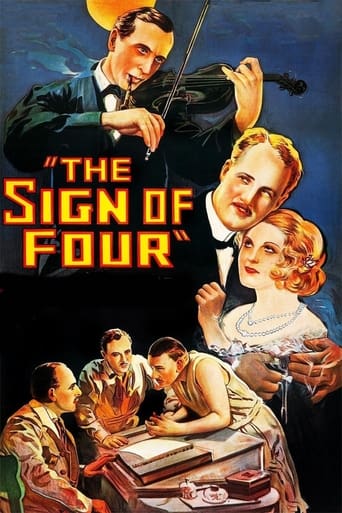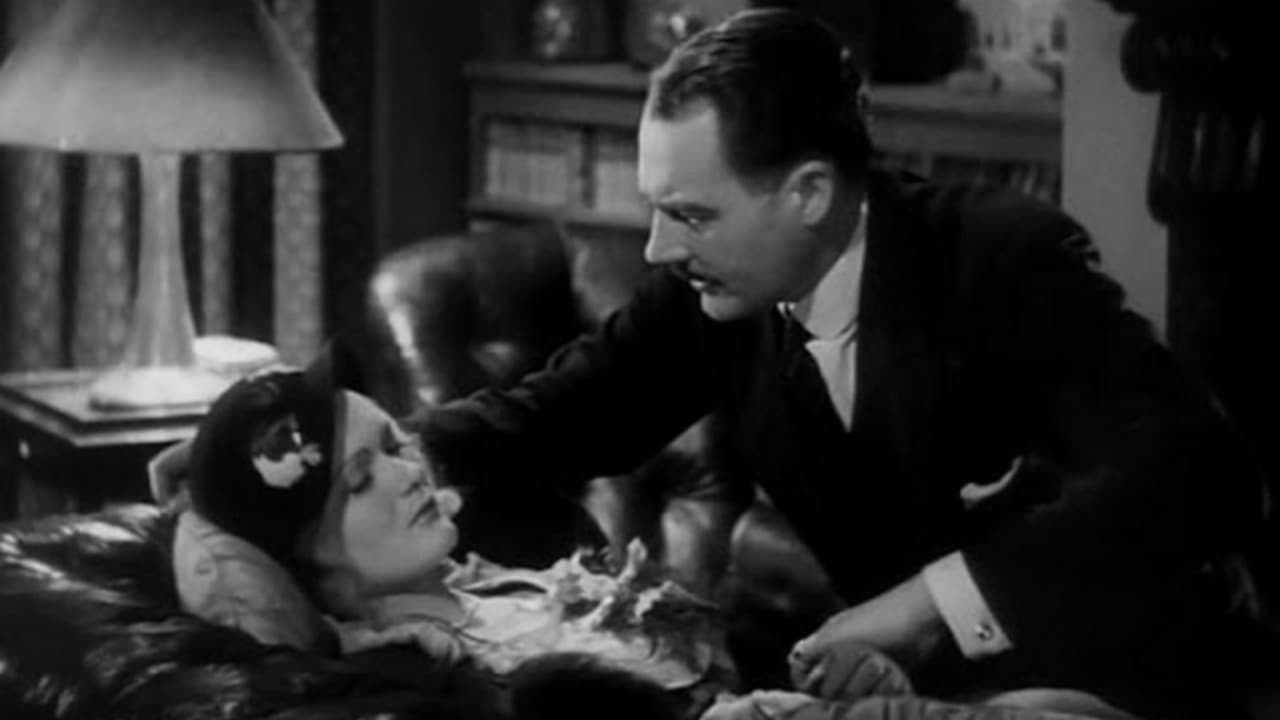robert-temple-1
The process of dragging the Victorian character Sherlock Holmes into modern times had commenced already by 1931, when Arthur Wontner played Holmes for the first time in SHERLOCK HOLMES' FATAL HOUR. Between then and 1937, he made four more Holmes films, this being the third film of the total of five. The setting is firmly contemporary. Dr. Watson (played feebly by Ian Hunter) makes a phone call from a public telephone box, and when he and the girl (played by Isla Bevan with one of those ridiculous wobbly voices, in between ludicrous fainting fits) visit a circus or fun fair in the dangerous area 'behind Kings Cross' in London, we see kiddies driving electric dodgem cars. However, the atmosphere of the film is firmly Edwardian, verging on Victorian, and the stuffy manners of all the characters are from such a distant past that even Conan Doyle might have been embarrassed by them. Despite all of these factors, this is a charming glimpse of a lost era of incomprehensible manners and pathetic flirtations, of drooping victim girls and pompous oaf police chiefs. Arthur Wontner plays Holmes with an arch and knowing air. He is convincing enough to make the films watchable. This is a film for people who like watching vintage Sherlock Holmes films, and there are plenty of such folk, amongst whom I from time to time may also be numbered. The villains of the film are perhaps the best cast, such as Roy Emerton with his wonky eyes and deadpan crook's manner. This was only the second feature film in which he appeared, but already he was a born classic character actor. He appeared again with Wontner as an arch villain in THE TRIUMPH OF SHERLOCK HOLMES in 1935. Emerton died in 1944 at the early age of 51. He had been a soldier in World War I, and variously also a stevedore, a cowboy, a fireman, a railroad worker, and a miner. They don't train character actors like that anymore! He appeared in 34 films and added authenticity to them all, I am sure. Perhaps his most unlikely part was as Octavius in Josef von Sternberg's I, CLAUDIUS (1937), which I have not seen.
bkoganbing
The Sign Of The Four or at least the screen version of the Arthur Conan Doyle novel has something you'll never see in another Sherlock Holmes film. It's Baker Street heresy in fact to have Dr. Watson get the girl.But that's what happens here as young Isla Bevan seeks the aid of Holmes and Watson portrayed here by Arthur Wontner and Ian Hunter. She's scared out of her mind because she has some valuable pearls that belong to a treasure taken from the Island of Andaman off the Malay and Bengal coasts. She didn't acquire them honestly, in fact her Indian army father along with another two partners stole them. They acted on a tip from a crazed one legged prisoner played by Graham Soutten who swore vengeance upon them for leaving him in the joint and denying him his share. Soutten's out and taking his revenge.The part of the crazed prisoner is played by a real life amputee who gets around pretty good. If Soutten had been American, MGM might have cast him as Long John Silver in Treasure Island instead of Wallace Beery. Soutten has a couple of cronies from the carnival where he is employed and traveling incognito. That part of the film could almost have been called Sherlock Holmes meets Freaks.Young Ms. Bevan and Hunter start falling for each other, but Hunter in his attempt to one up Wontner puts her in harm's way. It leads to more of an action climax than you will usually find in the Basil Rathbone/Nigel Bruce series of Holmes films.Still the idea of Watson getting the girl is really too much for Baker Street purists to take.
mobile707
The review above said this movie made good use of its resources, and I agree with that. The boat-chase-scene was very ambitious for 1932, and the early fight-scene between Sholto and Morstan seems more intense and realistic than similar efforts from that time-period.Having watched the DVD version just last night, I am sorry to say that understanding the audio-- at least in certain scenes-- takes a good deal of effort. Perhaps British audiences can pick up some of the words more clearly, but the recording technology was just so primitive compared to our time... oh, well. Let's just say I've never felt a keener need for sub-titles with an English-language movie.Compared to Doyle's novel, there are some important plot-changes. Also, when you consider how closely identified the Holmes/Watson duo is with the late-Victorian era, it really is a bit jarring to see them in a 1932 setting.
FilmNutgm
I recently saw this film simply because it was in a multi-pack of "B" mystery movies. I was very dubious since I had eagerly watched the Sherlock Holmes movies starring Basil Rathbone and didn't expect this film to best his performance. I was wrong. Arthur Wontner was able to convey Holmes' intelligence without the superciliousness that often mars other actors' portrayals. The Holmes/Watson relationship was one of equals instead of Super Genius/Amiable Bumbler. It was a refreshing take on a relationship that can grate as portrayed in the Rathbone films. There are drawbacks to this film, however. The sound quality is not first-rate--at least not on the DVD. The audience is not introduced to Holmes and Watson until 15 to 30 minutes into the film and the main villain's thick Cockney (?) accent made his dialogue heavy slogging--at least to these American ears. Is the print perfect? No. Can the pace be slow? Yes. Don't be deterred. See a wonderful Holmes, an intelligent and rakish Watson. It's a welcome eye-opener for those who have only seen the Rathbone films or the Brett television versions. Don't get me wrong--I think the above-mentioned actors are marvelous and had fine takes on Sherlock Holmes. I just prefer Wontner's ability to portray a wry braininess and the rapport he shared with Ian Fleming's superb Watson.



 AD
AD

